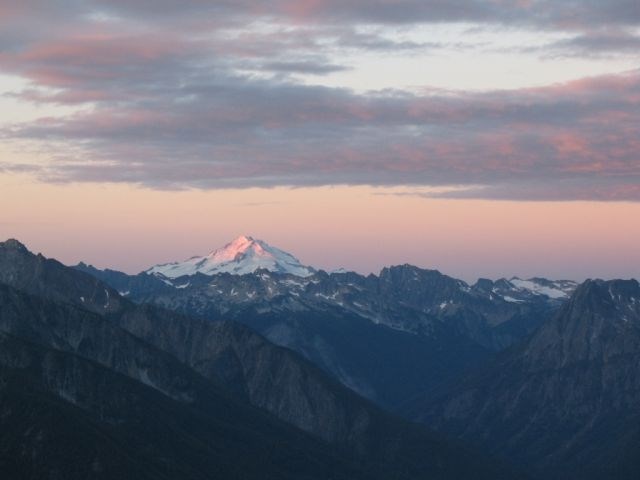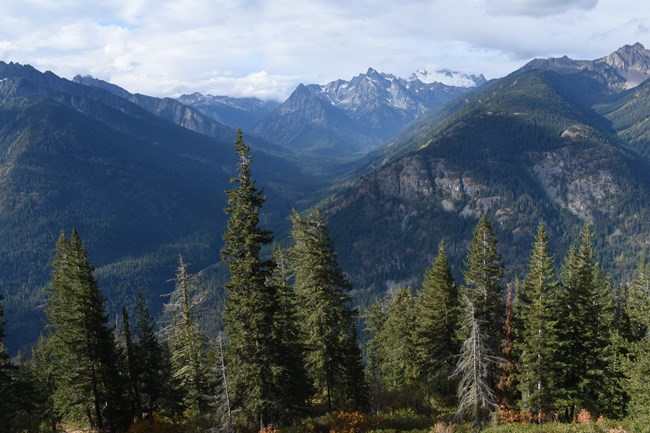|
When man ventures into the wilderness, climbs the ridges, and sleeps in the forest, he comes in close communion with his Creator. When man pits himself against the mountain, he taps inner springs of his strength. He comes to know himself.

NPS For those wanting expansive alpine views, the McGregor Mountain Trail provides a challenging adventure as it switchbacks steeply up McGregor Mountain. At 7,000 feet (2,134 m), this is the second-highest established camp in the park, and the highest accessible to stock riders. This trail can be done as a day hike from Stehekin by taking the shuttle bus to the base of the trail, or backpackers can add this as an intriguing side trip to a longer backpack from numerous directions. See the detailed trail description for more information. Special Concerns:
Backcountry Camping: A backcountry permit is required for all overnight stays. Located at 7,000 feet (2,134 m) near the end of the trail, Heaton Camp is a single-party site for up to 12 persons or stock. A nice base camp can also be had in the valley at High Bridge or Tumwater camps. Access: From Stehekin, take the shuttle bus 11 miles to its end at High Bridge and follow the Old Wagon (Pacific Crest) Trail heading north toward Howard Lake. Backpackers can reach this trail from the north via the Bridge Creek Trail or from the west via the Cascade Pass and Upper Stehekin Valley (old road) trails. 
Detailed Trail Description The trail (it is the Pacific Crest Trail north at this point) begins behind the corral at High Bridge, and climbs moderately to Howard Lake in 1.3 miles (2.1 km). Enjoy the birding and other attractions of this little lake before heading on. The signed junction to McGregor Mountain Trail is just beyond the lake, on the right. Climbers and experienced hikers who want further adventure can continue upward with care. From Heaton Camp the trail continues for a short distance for continued great views, then the trail ends at an enormous talus slope. The summit looms 1,000 feet (330 m) above. Reaching the summit requires a hand-and-foot scramble up the talus slope and along exposed rocky ledges. Route-finding skills are essential. The most used route starts at the top of the talus field to the left of the summit. Look for faint, intermittent red arrows painted on the rocks marking the best way to proceed. A radio repeater is visible on the summit, providing a good landmark for those attempting to negotiate the summit route. 

NPS Graphic |
Last updated: October 20, 2022
